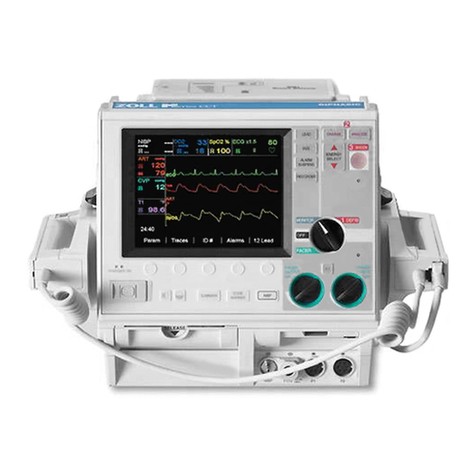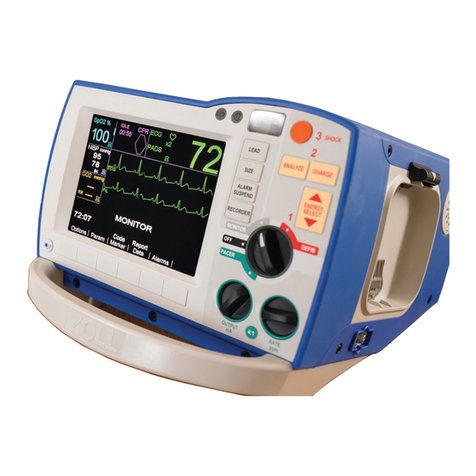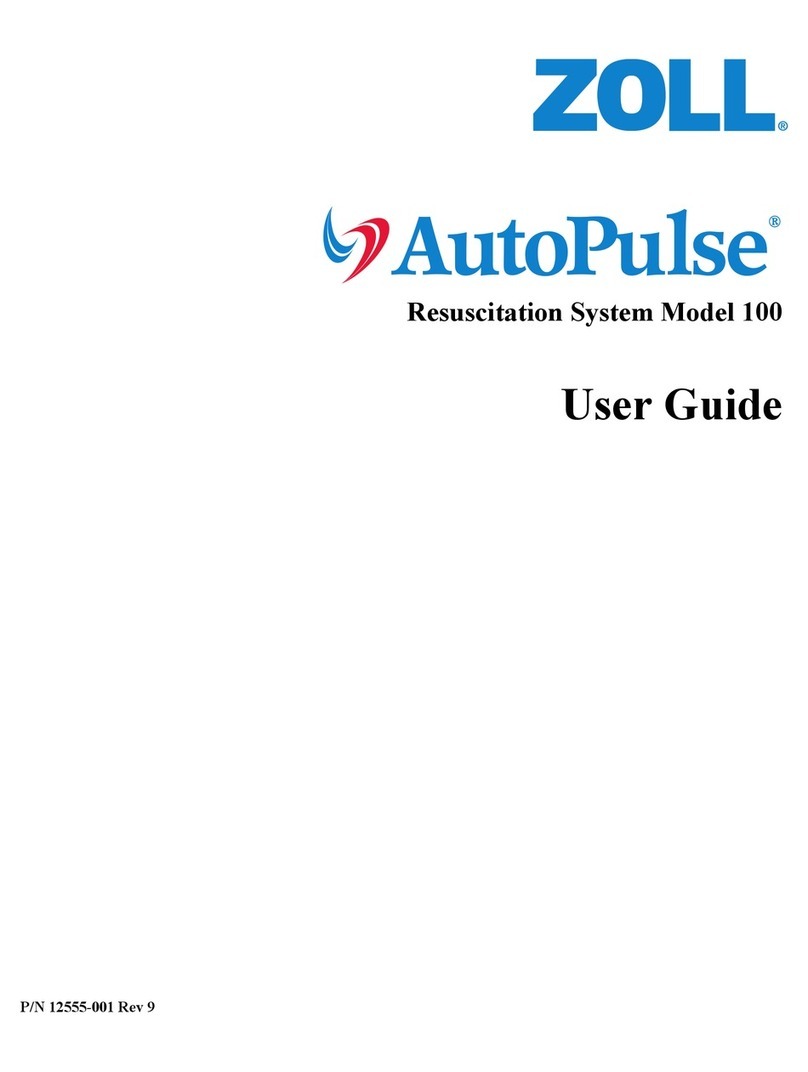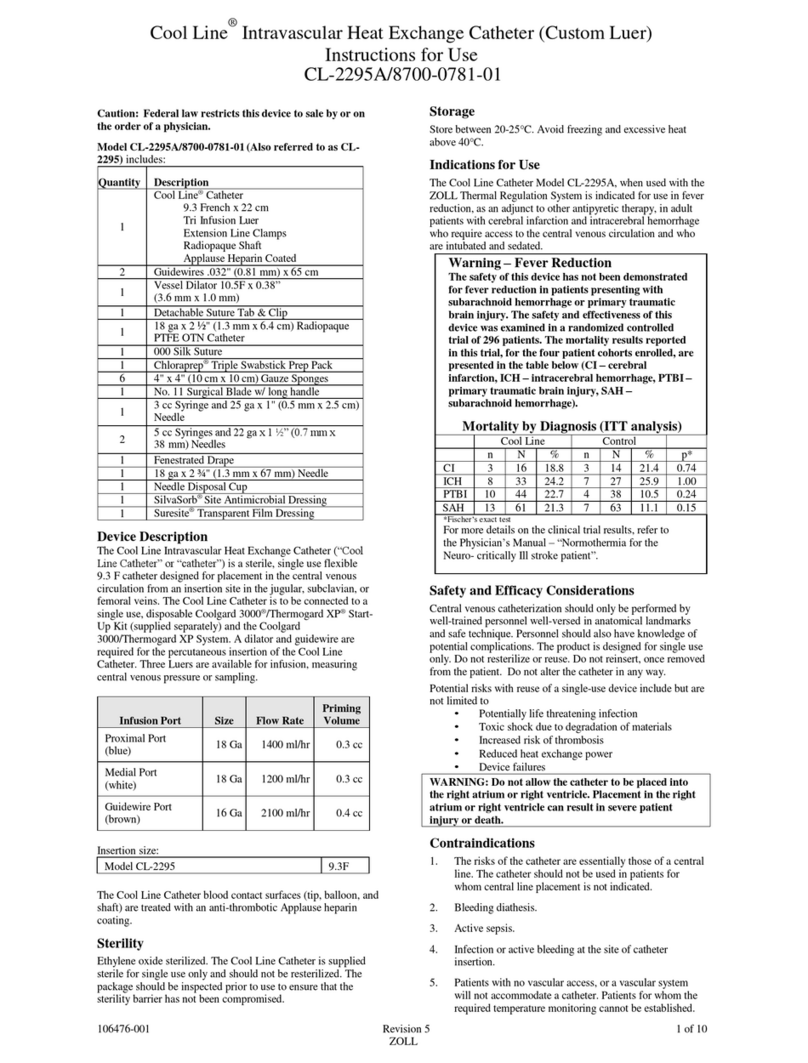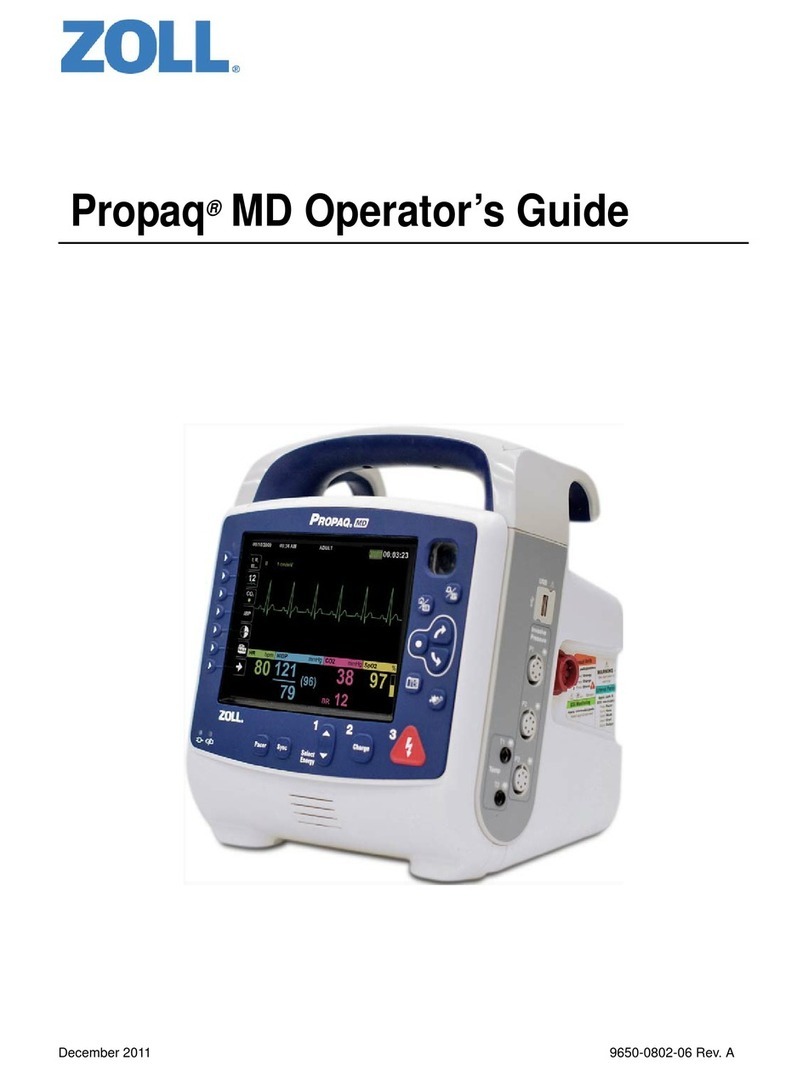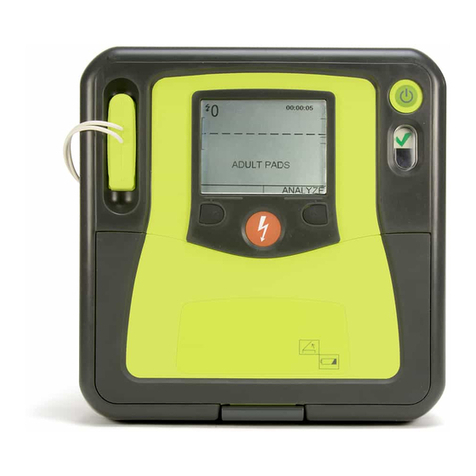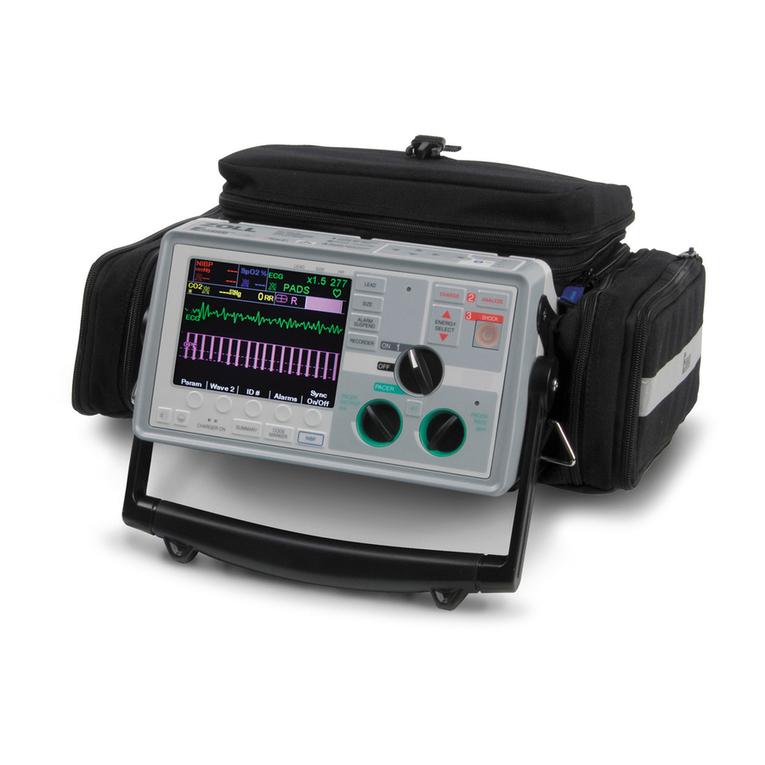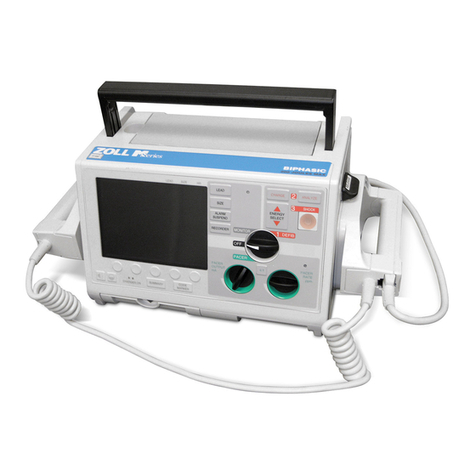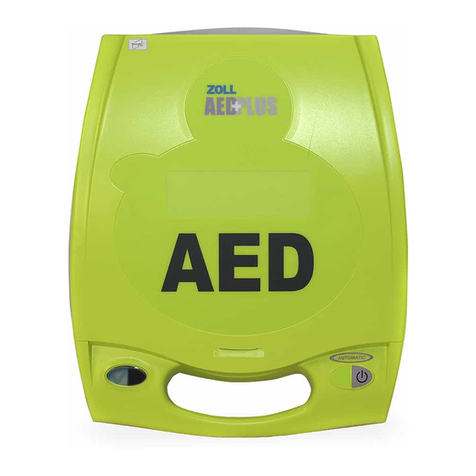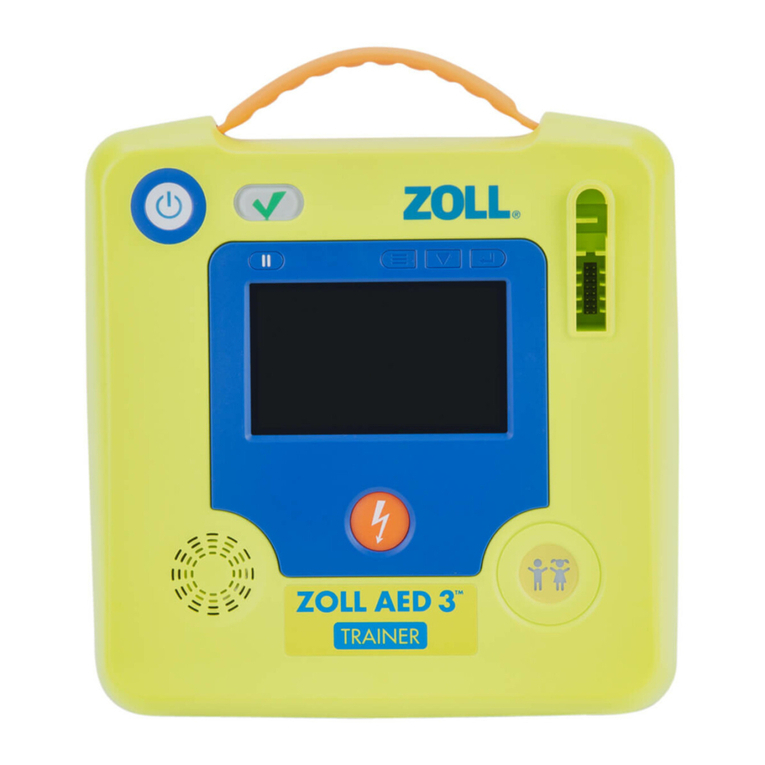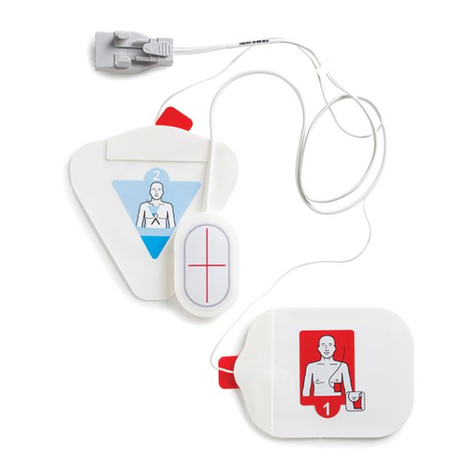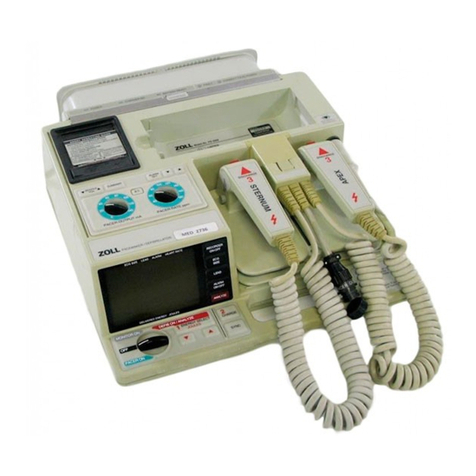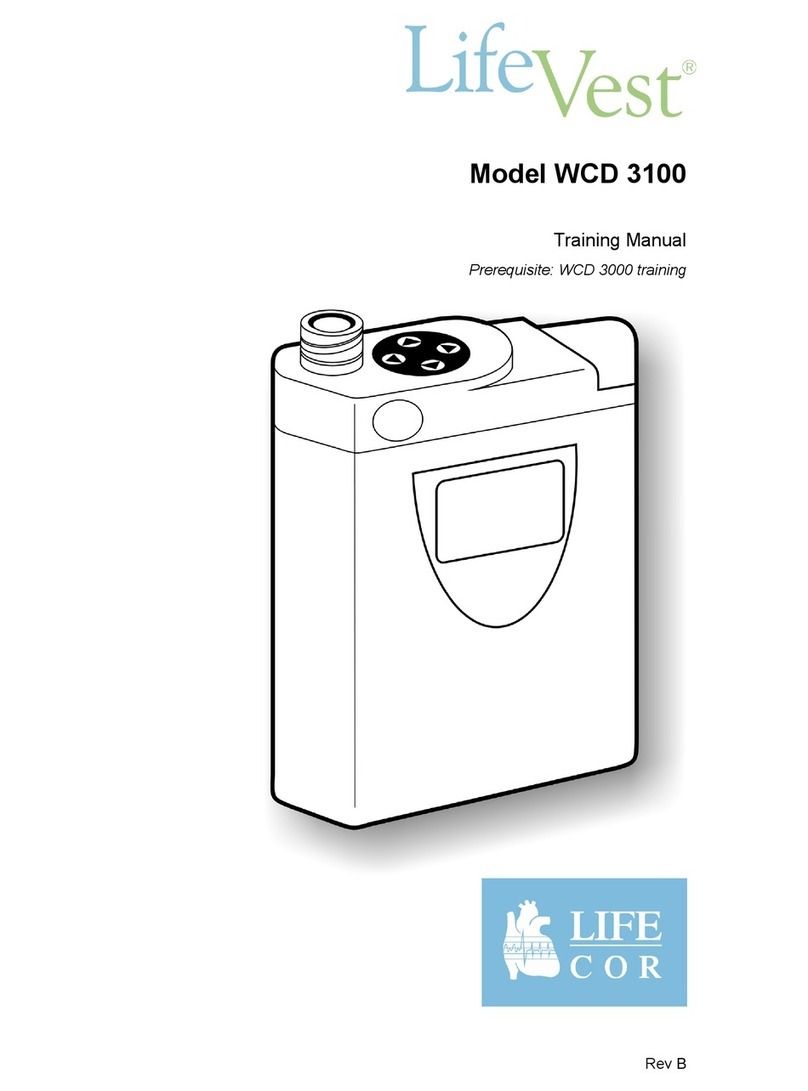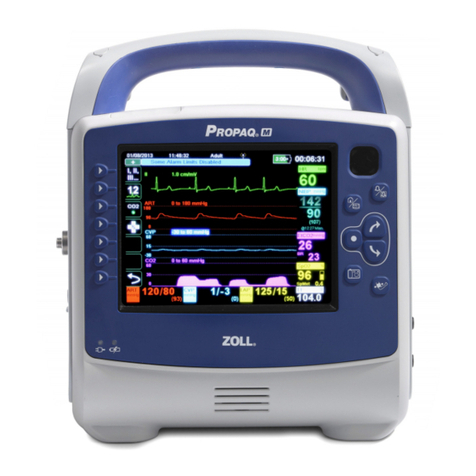
ZOLL IVTM™ System Physicians' Manual
600248-001 Rev 3 8
Peripheral Responses
The skin carries sensory receptors to both cold and heat; although, the cold sensors
are ten times more numerous. These cutaneous temperature sensors serve as a
strong stimulus to shivering and serve to increase or decrease both sweating and
vasodilatation. The response of the sensors is dominated by their response to cold.
Summation of Peripheral and Central Sensory Signals
The posterior hypothalamus receives signals from both the peripheral temperature
sensors and from the preoptic area of the hypothalamus. The signals are integrated
and central control signals are sent to the skin to modify sweating, vasodilatation, and
piloerection.
The dorsomedial portion of the posterior hypothalamus is normally inhibited by the
preoptic portion and excited by cutaneous cold sensors. Excitation of this area due to
cold leads to stimulation of muscle cells via the lateral columns. This action increases
the resting tone of the muscle, which triggers the stretch reflex. The resulting
contraction pattern is an oscillation between opposing muscle groups with no pur-
poseful movement.
Increased Body Temperature
The body’s temperature increases either from increased heat generation (cellular
respiration or shivering), or reductions in skin losses. Increased cellular respiration at
rest is possible by two mechanisms: chemical thermogenesis and thyroxine-mediated
increases in the metabolic rate.
Chemical thermogenesis in adult humans (who lack brown fat) is limited to no more
than 10–15% of the basal metabolic energy output. It is the result of the uncoupling
of oxidative phosphorylation in response to circulating norepinephrine and
epinephrine.
In a cold environment, significant increases in thyroxine level and therefore metabolic
drive, do occur. However this is a long-term adaptation and is of little consequence in
discussing the short-term regulation of body temperature.
For the intubated and sedated patient:
•Shivering is pharmacologically damped or lost.
•Central control, driven by the summation of peripheral and central
sensory input, is reduced or lost.
•Disturbed hypothalamic function can directly reset the temperature set-
point.
Thermal Regulation and Disease States
Fever is a response to either endogenous or exogenous pyrogens, or direct effects
upon the hypothalamic temperature control centers.
Pyrogens Endogenous pyrogens are families of polypeptides (e.g., interleukin 1) that are
produced by macrophages, monocytes, and other white cells. They are mediators of
inflammation. They act centrally upon the hypothalamus to modify thermoregulation.
The typical fever response shows an initial abrupt rise in core temperature to a peak
(acute phase response) with a more gradual decay to normothermia. Endogenous
pyrogens do not appear to have other than central effects upon thermoregulation.
